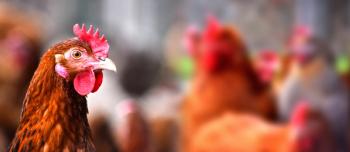
Nebraska Department of Economic Development provides additional funding to support innovative swine research
With this funding, the University of Nebraska-Lincoln will be able to expand its focus on early disease detection using technology in swine production.
The Nebraska Department of Economic Development is providing $100,000 to the University of Nebraska-Lincoln (UNL) for swine research. This funding comes in addition to the $200,000 grant UNL received last year as the winner of Merck Animal Health’s High-Quality Pork award. The UNL research project is currently ongoing and has the potential to enhance individual animal monitoring and care practices as well as create farm labor efficiencies for the swine industry.
The UNL research is focused on early disease detection, using radio-frequency identification (RFID) technology to monitor and track individual pig feeding behavior. UNL is developing a dashboard that would provide swine producers with real-time insights on what an individual eats and drinks to help them identify sick animals more quickly.
The project’s objective is to apply the technology to a commercial operation in the US and evaluate its implementation in the farm setting. It also would be applied to a commercial operation outside the US to understand any global implications. The additional funding will allow the project to hasten the integration of this technology into farms.
Tami Brown-Brandl, PhD, professor, Dr William E., and Eleanor L. Splinter Chair, UNL, says, “These grants will help us prepare this technology so it’s closer to implementation. We’re taking animal production to the next level. Detecting sick animals sooner means better animal welfare, less antibiotic use, and less impact on the environment. We believe technology can help improve animal health and management decisions while saving the animal caretaker valuable time.”
Another facet of the project is the use of depth-camera images to weigh pigs identified through RFID. The technology employs a ceiling-mounted camera that takes digital depth images of individual pigs while drinking. Data is captured continuously, and pig weight information is available daily on the dashboard.
“We measure weights daily of individually identified pigs and can determine when they will be ready for market using true estimates of weight, thereby removing all of the guesswork,” Brown-Brandl explained. “This enables producers to sell uniform loads of animals at ideal weights. It will enable packers to specify pigs within a tight weight range to reduce variability in cuts and inform the supply chain of a specified product.”
Merck Animal Health introduced the High-Quality Pork Award program in 2018 to support the development of new ideas to advance on-farm animal care practices. Through the combination of RFID technology and real-time monitoring, this research project aims to empower swine producers with the ability to detect sick animals earlier, as well as more efficiently maintain ideal weights in a uniform way.
“This intersection of RFID tag technology with disease identification and animal weight gain is exciting,” said Miquel Collell, DVM, global swine technical director for MSD Animal Health. “This technology has the potential to provide swine producers with direct benefits both in the early detection of sick animals and in helping them to market uniform animals at ideal weights. We are excited about the future opportunities that connected technologies could offer farmers, producers and veterinarians.”
“We are pleased to support this project. The triangle of education, industry and swine production—all central to the state of Nebraska—is key, and the practical benefits of advancing swine production practices to sustain this important industry make great sense,” said Ben Kuspa, business innovation manager, Nebraska Department of Economic Development. “We are pleased to provide funding and look forward to the long-term integration of this technology on farms.”
Reference
- Nebraska Department of Economic Development Provides Additional Funding of a Merck Animal Health Grant to Support Innovative Swine Research. News release. Merck Animal Health; December 14, 2021.
Newsletter
From exam room tips to practice management insights, get trusted veterinary news delivered straight to your inbox—subscribe to dvm360.






